There is no one who deserves the accolade of “permaculture pioneer” more than Phil Gall who died recently with his family around him in a Melbourne nursing home. Before he heard about permaculture in 1976 he had worked with some of the main influencers on permaculture, was involved in both land and community counterculture experiments and worked in Indigenous communities. In the early years of permaculture he partnered with and influenced both co-originators in different ways. I think he is the only person who worked with the three most cranky, and brilliant, of Australia’s ecological pioneers, PA Yeomans, Alex Podolinsky and Bill Mollison and, in later years, exchanged ideas with a fourth, Peter Andrews.
As permaculture design and teaching networks consolidated in the 1980s and 1990s, career conflicts, family difficulties and health crises dampened Phil’s influence, but his passion for permaculture never waned. In later years, a long partnership with leading NSW south coast permaculture teacher and community activist John Champagne saw Phil regale participants with his incredible storytelling and design knowledge across the spectrum of Permaculture Design Course (PDC) subject areas.

My own relationship with Phil began early but indirectly when my mother Venie Holmgren was beginning her self-education for a late life move (aged 57) back to the land in 1979. She joined a permaculture course taught by Phil at the Eltham Living and Learning Centre, a year before Mollison taught the first PDC (which from memory Bill had invited Phil to co-teach). I first met Phil as one of a contingent of Melbourne Down To Earth (DTE) activists at the Jackeys Marsh DTE Festival in Tasmania where I was one of the resident organisers. In my absence, Venie received Phil’s consultancy input, confirming her selection of a 180 acre bush property on the Far South Coast of NSW. My two year intensive partnership with my mother, developing the land and building a passive solar house, which I documented in Permaculture in the Bush, was first presented as a case study in permaculture design and development at the first International Permaculture Convergence in 1984 (later published by Nascimanere in 1992). In that way Phil indirectly set the path for this important family project and my career path in rural permaculture property design. I don’t remember Phil being at that pivotal gathering, which included Mollison’s most active PDC students. In the 90s I recall Phil was drawn back in to permaculture networks as part of a Melbourne based consultancy with Vasko Drogriski and travelled to Perth for the International Permaculture Convergence in 1996, but his runs of bad luck in the personal and professional domains undermined his creative potential as a designer.
During those years, Phil told me that my modest efforts in living and designing permaculture in Jackeys Marsh helped cement his belief that permaculture was more grounded than Mollison’s grand visions might have suggested. I consoled him on his intense feelings of hurt and rejection from Bill. Despite Phil’s passion in contributing his keyline designs and projects, which were included in Permaculture Two, Bill withdrew his invitation to Phil to co-teach the first PDC. Phil may have been one of the first of many creative and energetic collaborators with Mollison who were burnt by the process. Although at various times I had opportunities to work with Phil I could also see how some of the chaos of his life, typical of intensively creative and passionate people, was self-inflicted and something I instinctively avoided. As a qualified architect and landscape architect with a passion for ecological redesign of agriculture, Phil Gall understood and communicated this foundational basis of permaculture in his own unique way.
The book Permaculture Pioneers: stories from the new frontier is a collection of personal stories of Australian permies edited by Kerry Dawborn and Caroline Smith, which we published through Melliodora Publishing. We didn’t have any influence over who was included in the publication, and while Bill Mollison declining to write something was the most obvious gap in that collection, Phil Gall’s story is the missing one I feel most strongly about.
Phil’s move to the Far South Coast of NSW saw him gain collegiate support and appreciation from Hugh Gravestein, John Champagne, Dean and Annette Turner and others in the bioregion, as well as the opportunity for students on PDCs to gain from his depth and breadth of design thinking.
At the 2015 Australian Permaculture Convergence in Perth, Phil was recognised as a “Permaculture Elder” and I remember him regaling young permies with his incredible stories, including about growing up and connecting to nature on the wild west coast of Tasmania in the 1950s.

In 2016 Phil spoke at Venie’s funeral about her “hippy years” which overlapped with his own during the 1970s. On our RetroSuburbia Roadshow tour in 2019, Su and I made a special point of calling in on Phil who was living in his small flat in Bermagui, to reminisce about the past with a permaculture elder who had definitely burnt the candle of his passion at both ends with more give than take. I can remember being embarrassed at the idea of a photo together (what Su calls a “Selfish”) and later regretting the missed opportunity.
Hearing he moved to a nursing home in Melbourne to be closer to family was another missed opportunity to connect with Phil while the Covid madness was another impediment to our reconnecting. Permaculture colleague Cecilia Macaulay let Su know by text about her visit to see Phil a couple of weeks back in which Phil mentioned how much our respect for him and his work meant to him. By the time we tried to get a message to Phil, he was gone. After a tough life with ongoing health problems and several near death experiences, it is amazing that Phil Gall survived to old age rather than dying young like so many other creative souls unsuited to the harsh realities of this world.

While the meagre legacy from his chaotic professional life was his greatest disappointment, like other ecological pioneers of Australia, his storytelling may be a more invisible but potent legacy that has inspired and empowered many more ordinary folk who connected with him over a long life.
David Holmgren
Permaculture co-originator
Melliodora, Djaara Country
Autumn 2023
⊗ ⊗ ⊗
For those interested in more, this is a conversation between Richard Telford and Phil Gall, recorded driving between Melliodora and Abdallah House, Seymour, after Phil spoke at Venie Holmgren’s funeral, February 2016.
Phil Gall speaking at Venie Holmgren’s funeral:

A photo of the granite country through which Richard and Phil were driving:

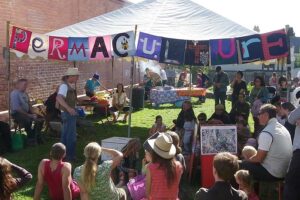
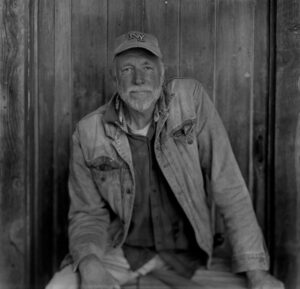
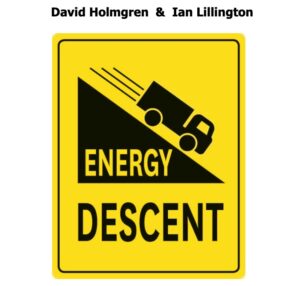
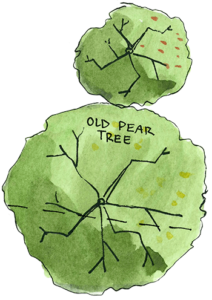
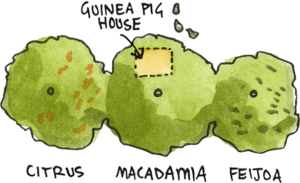












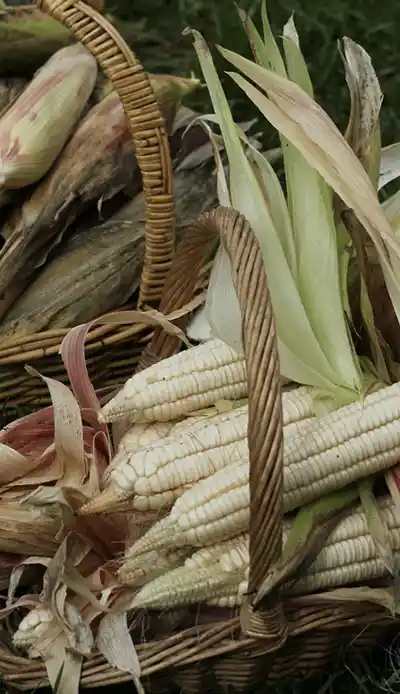
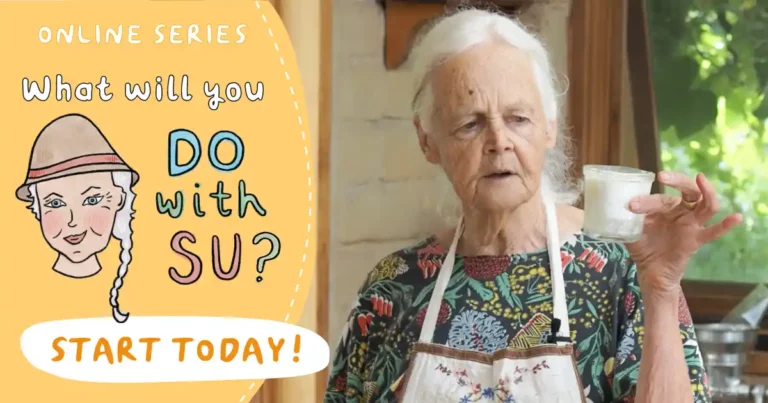
1 thought on “Phil Gall: Permaculture Pioneer”
Thanks for this obituary David,
I saw this come up in one of the social media feeds and Lisa and I felt very sad to read it as it was the first we’d heard of dear Phil’s passing.
We can’t recall when we first met Phil but we remember him as being an incredibly positive, jovial and convivial spirit who, every time we caught up, reminded me how much of a ‘Keyliner’ he was at heart.
Our mutual friend, the late Geoffrey Booth, always spoke fondly of Phil as well and together they both shared an ongoing passion for ‘The Keyline Plan’ as a means of practical landscape planning, and their admiration of its founder, the late P.A. Yeomans.
Phil was very generous with his time and I know that those that taught courses and workshops with him will be very sad at his passing and forever influenced by his boundless attitude to life and dedication to this world and its species.
Lisa and our family extend our heartfelt condolences to Phil’s family and his many friends,
Requiescat in pace old mate